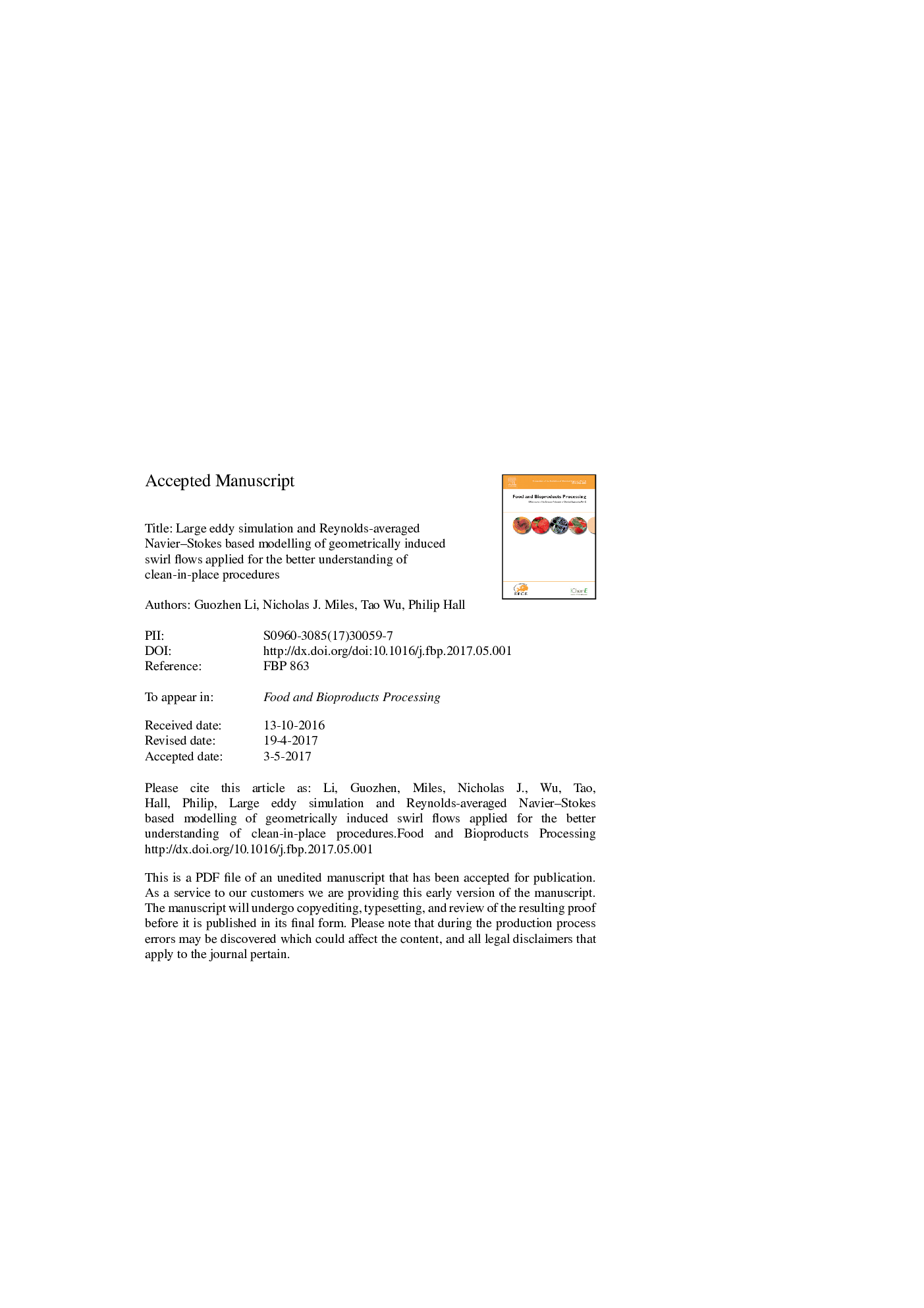| Article ID | Journal | Published Year | Pages | File Type |
|---|---|---|---|---|
| 4752935 | Food and Bioproducts Processing | 2017 | 46 Pages |
Abstract
In this work we numerically studied the potential of a geometrically induced swirl flow generated by means of flow passing through a four-lobed swirl pipe on the intensification of Clean-In-Place (CIP) procedures in closed processing systems without the need of increasing flow velocity. We aimed at revealing the time-averaged and unsteady property of the turbulent swirling flow and its strengthened hydrodynamic impact on the internal pipe surface where cleaning takes place. We performed modelling based on Reynolds-averaged Navier-Stokes equations (RANS) and large eddy simulation (LES) of turbulent swirl flows with different swirl intensities. The LES model presented a more vigorous and dynamic swirling flow than the RANS approach. The LES successfully identified four vortex core regions within and downstream of the swirl pipe which the RANS approach failed to capture. The RANS and LES results showed that, without the need of increasing the overall flow velocity, the four-lobed swirl pipe is able to increase not only the mean wall shear stress to the downstream but also the fluctuation rate of the wall shear stress especially in the locations further downstream of the swirl pipe where the four cortex cores have interacted and dissipated. As the increase of either the mean or the fluctuation rates of wall shear stress contribute to pipeline cleaning, the numerical work has demonstrated that, with the local introduction of the swirl pipe, the efficiency of CIP procedures in closed processing systems would be improved significantly thus reducing time and costs for the CIP process.
Related Topics
Physical Sciences and Engineering
Chemical Engineering
Bioengineering
Authors
Guozhen Li, Nicholas J. Miles, Tao Wu, Philip Hall,
